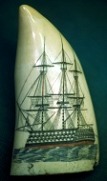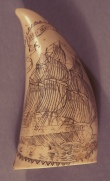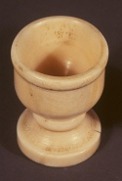Whaling Home | Summer in the Arctic
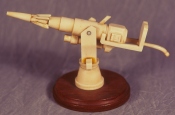
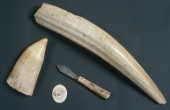
Bone Carvings
The whale men spent many months at sea. This meant that they had much free time. Arctic whalers often spent their free time carving objects out of whalebone. The southern whalers carved pictures on the teeth of sperm whales. This bone carving was known as scrimshaw.
There are many examples of this scrimshaw work in museums across Scotland. Montrose Museum holds a sperm whale tooth.
While whalers in the north hunted baleen whales, which had no teeth, those in the south hunted the toothed sperm whales.
Carvings were not just made from whale bone. Kirkcaldy Museum holds a variety of objects. There are two large tusks, possibly from a walrus, There is also a pendant carved with the form of a polar bear.
The Scottish Fisheries Museum hold a number of examples including a sperm whale tooth and two egg cups.
